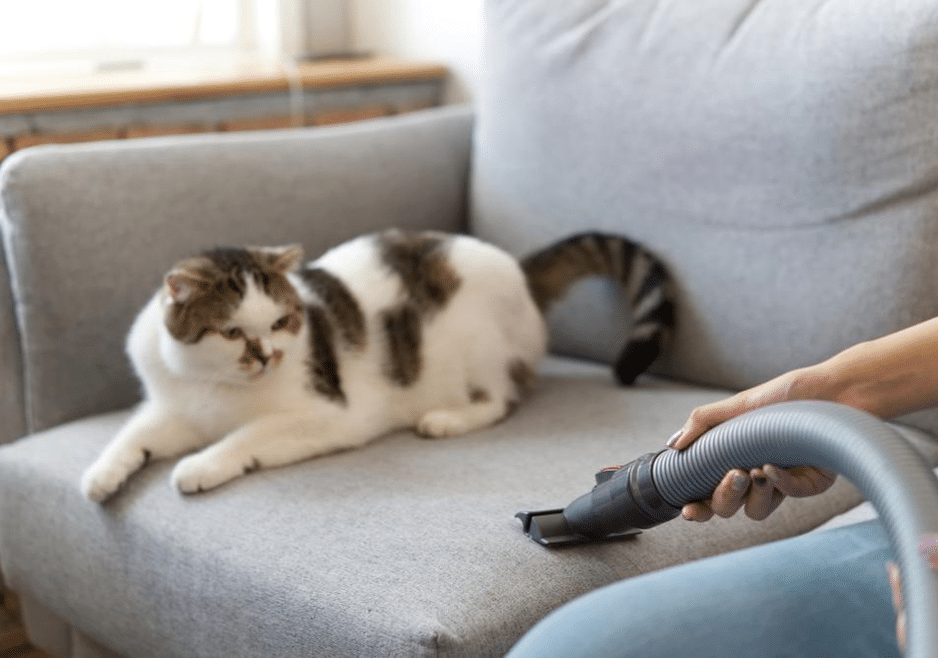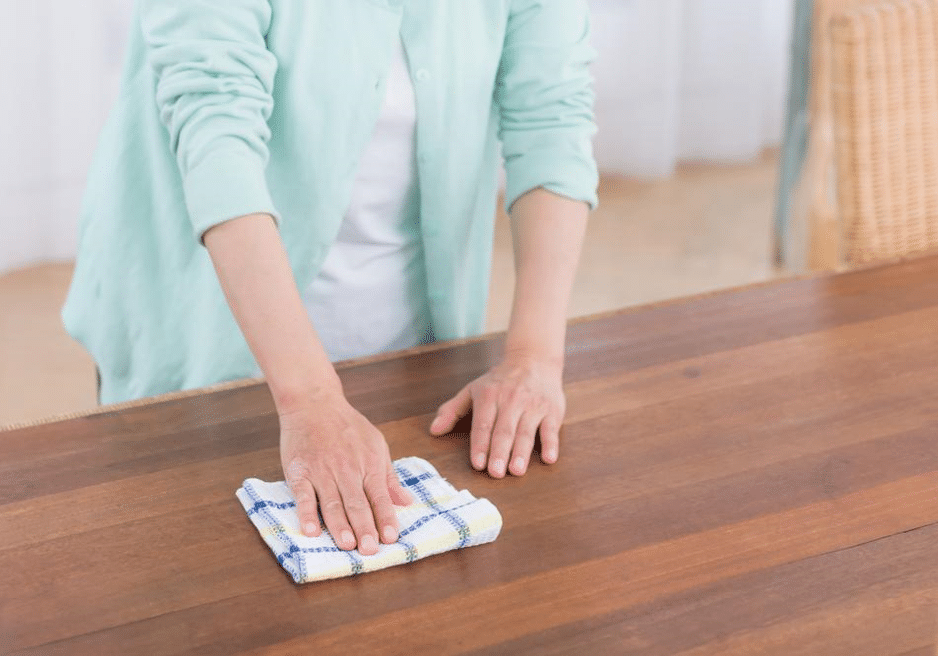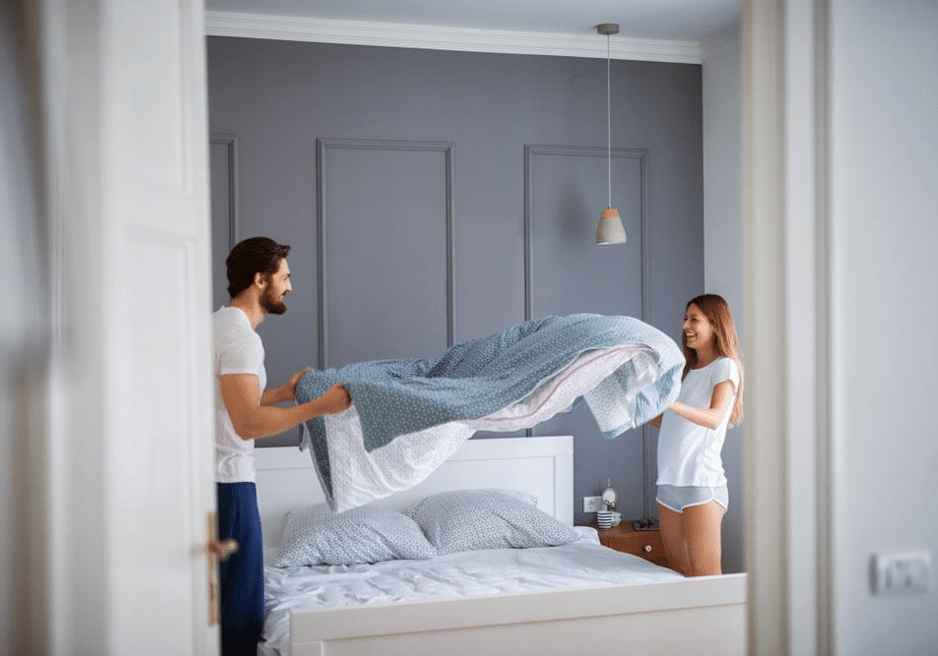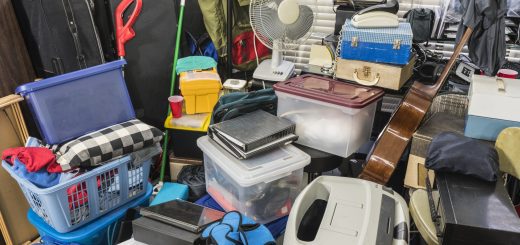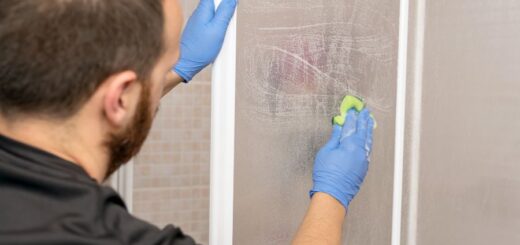Breathe Easy: 5 Ways to Allergy-Proof Your Home
From springtime pollen to our beloved pet’s dander, most of us recognize our allergy triggers. They’re right under our noses in the most literal sense, but we take steps and precautions and suffer through them regardless.
But did you know there are less obvious allergy triggers, like moldMold is a type of fungus that grows in damp or humid conditi... More and dust mites, that might be lurking? These underlying allergens might be the culprit to what’s causing your runny nose or itchy eyes.
So, if you can’t see these microscopic allergens, how do you get rid of them?
Here are five fundamental ways to allergy-proof your home so that you can breathe easier.
1. Install Allergy-Friendly Flooring
One way you can reduce allergens within the home is to install an allergy-friendly flooring option.
Carpet flooring, as well as area rugs, are quite notorious for collecting all sorts of allergens: pet dander, dust mites and more. Routine vacuuming and shampooing can’t even keep up with some fiber-hiding allergens. If you love carpet flooring, a low-pile carpet is best, as are easily washable rugs. Instead of fibrous carpets, install an allergy-friendly flooring best suited for your lifestyle.
For instance, hardwood flooring, as well as linoleums, different types of vinyls, and laminates, can keep dust mites and moldMold is a type of fungus that grows in damp or humid conditi... More at bay. Be more mindful of more rustic hardwood floors, however, as they tend to have deep grooves that can collect dust.
2. Maintain Humidity Levels
Maintaining humidityHumidity is the amount of moisture or water vapor present in... More levels is an excellent way to allergy-proof your home.
Bathrooms especially have excess moisture and can develop mold when a ventilationVentilation is the process of exchanging or circulating air ... More system is not used each time a shower steams up the place. But there’s more to tracking humidityHumidity is the amount of moisture or water vapor present in... More than merely opening a window.
Dust mites, for example, thrive in humid environments. They also live off dead skin cells that fall off in our bedding, carpet and even stuffed animals.
The best way to combat dust mites is to maintain humidityHumidity is the amount of moisture or water vapor present in... More levels. The key here is to maintain–as to keep a balance. Low humidityHumidity is the amount of moisture or water vapor present in... More can cause allergic reactions just as much as high humidityHumidity is the amount of moisture or water vapor present in... More. While elevated humidityHumidity is the amount of moisture or water vapor present in... More levels cause moldMold is a type of fungus that grows in damp or humid conditi... More and dust mites, low humidityHumidity is the amount of moisture or water vapor present in... More can cause dry air, resulting in itchy eyes and a stuffy nose.
Homeowners have an easy way to monitor their home’s humidityHumidity is the amount of moisture or water vapor present in... More levels. Through a hygrometer device, which you can find at most local hardware stores, you can easily track the relative humidityRelative humidity (RH) is the percentage of moisture in the ... More (RH). The best RH to aim for is between 40 and 50 percent; however, winter seasons can reach the lower end of 40 percent to fight condensation on windows and the like. If it reaches 60 percent or more, that’s when you need a dehumidifierA dehumidifier is a device that removes excess moisture from... More.
3. Remove Spray Cleaners and Air Fresheners
Aerosol-based spray cleaners and air fresheners are notorious for emitting volatile organic compounds (VOCs) into the home. These can not only cause mild allergic reactions like headaches but also trigger an asthma attack.
Instead, use more green products, specifically those given the Green Seal of Approval, which guarantees the product has been tested and is also safe for the environment. Be cautious of anything labeled “hypoallergenic,” as it still may not be gentle enough for some people. Alternatively, you can create homemade cleaners by mixing various ingredients such as water, lemon juice and vinegar or mineral oil, depending on whether it’s glass or wood surfaces.
4. Use Better Filters and Open Windows
Cleaner indoor air qualityIndoor air quality (IAQ) refers to the condition of the air ... More is essential to allergy-proof your home, so it’s important to keep a house well-ventilated and hold dust particles to a minimum. You can do this by several different means.
For vacuums and air conditioning systems and units, use a high-efficiency particulate air (HEPA) filter. These HEPA filters can catch 99.97 percent of particulates, such as sporesSpores are microscopic reproductive units of fungi or mold t... More, moldMold is a type of fungus that grows in damp or humid conditi... More, bacteria and even car emissions.
Another simple trick is to keep dust from being stirred up in the first place, using dust cloths and mops in place of brooms and feather dusters.
It’s also not a bad idea to open the windows every so often to allow fresh air inside and to flush the bad air outside. Keep in mind, however, to close windows during allergy seasons and hours with high pollen counts.
5. Limit Textiles and Wash Routinely
Textiles not only shed their own fibers, but they can capture particulates as well. And in homes, textiles are everywhere–from duvets and bedsheets to curtains and upholstered sofas.
Properly wash any bed sheets and pillowcases in hot water to sterilize germs and remove dust mites. Once cleaned, be sure to keep pillows and mattresses encased. Another tip to know when it comes to bedding is to consider using synthetic materials in place of wool throws or that feather duvet insert or pillow. We spend a lot of time asleep, so remember a bed could be to blame for some allergies.
Use a handheld vacuum and go over upholstered sofas and chairs on a regular basis. If you have horrible allergies or asthma, you should also consider smoother upholsteries, such as leathers, that are easier to maintain.
And while your bed linens may be the simplest chore to do, don’t ignore other areas where dust and allergens typically accumulate. For instance, it may seem like a pain to unhinge curtains from their rods, but these are one of the worst offenders. Another option is to replace curtains and horizontal blinds with roller shades.
Discover a New Way to Allergy-Proof Your Home
There are many common allergy triggers, from pollen to pet dander. While some of these known triggers you can avoid, it’s not always possible. Sometimes, allergies are caused by something less conspicuous.
In fact, some of us may not even know what triggers our allergies. So, before you go remodeling your home into bare minimalist style or keeping the family dog contained to fewer rooms, be certain you know what’s causing the allergies in the first place.
However, the only true way to keep your allergies in check is to take preventative measures. So, when allergy-proofing your home, follow these fundamental steps.
Hopefully, this list has offered a few more insightful ways to breathe a bit easier.
Professional Mold Remediation
While homeowners can safely take the steps mentioned above to reduce the number of allergens in the home, you should refrain from dealing with moldMold is a type of fungus that grows in damp or humid conditi... More. MoldMold is a type of fungus that grows in damp or humid conditi... More growth can happen anywhere in the home and it is dangerous to remove without the proper products and equipment. It is best to call a professional mold remediation company to remove moldMold is a type of fungus that grows in damp or humid conditi... More from your home safely.










